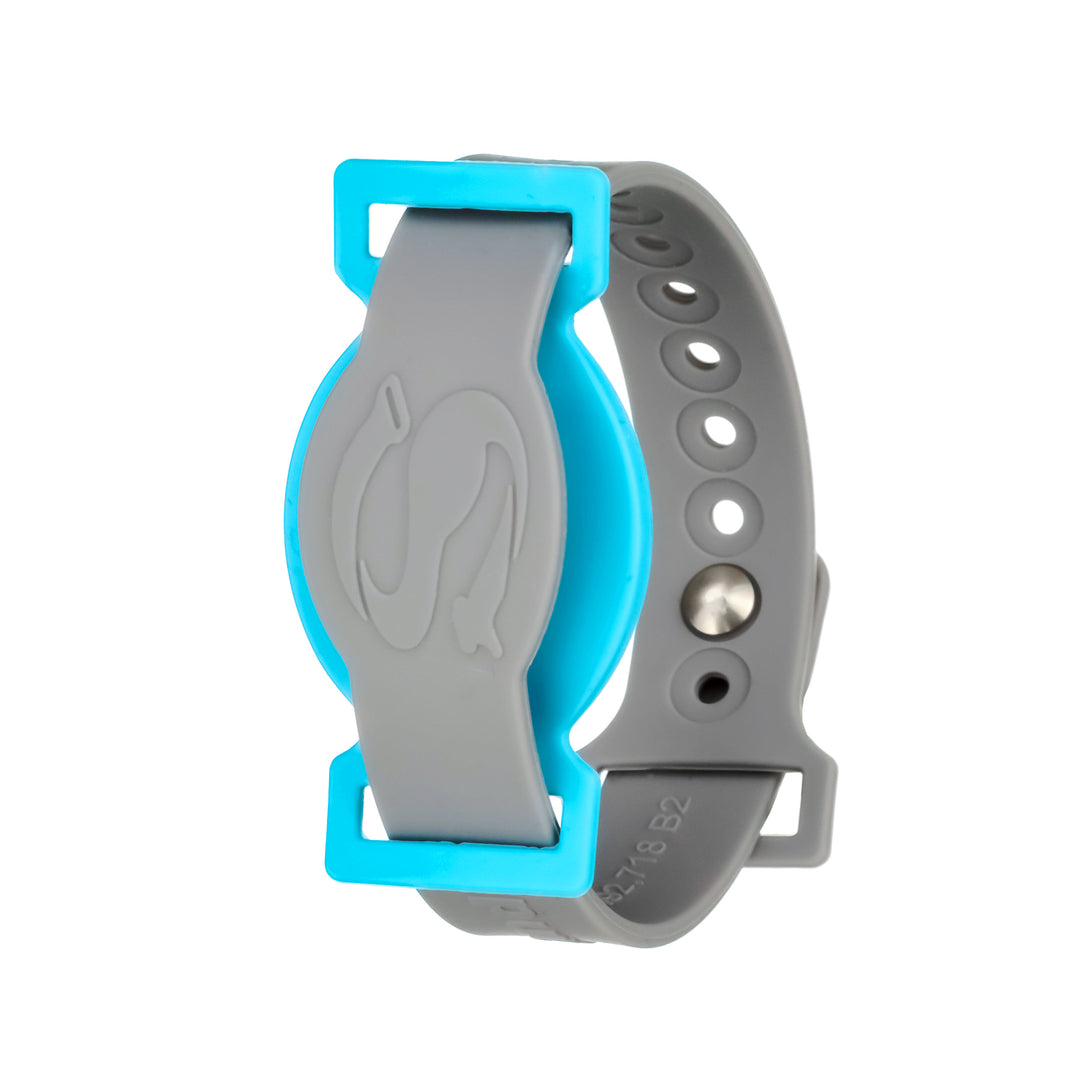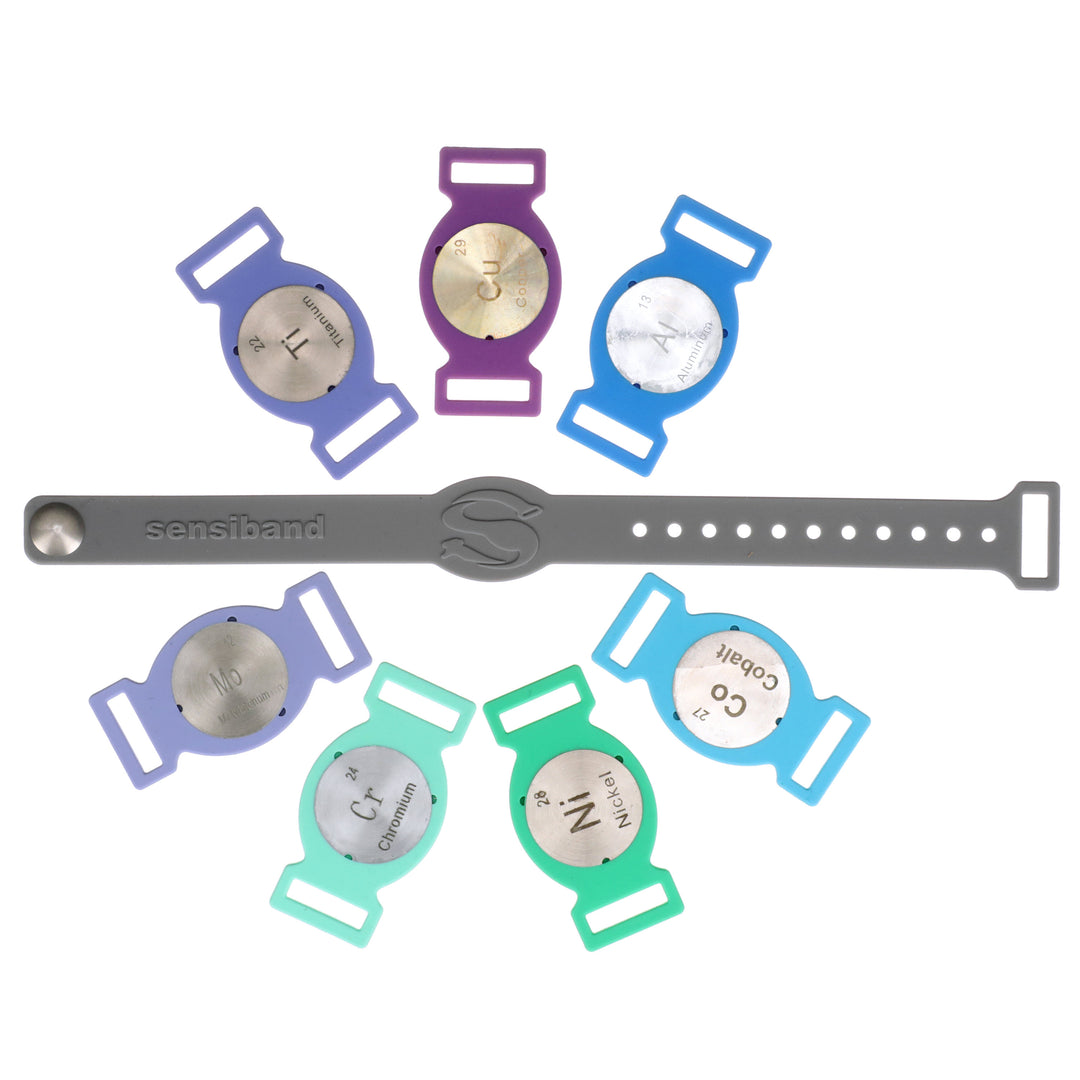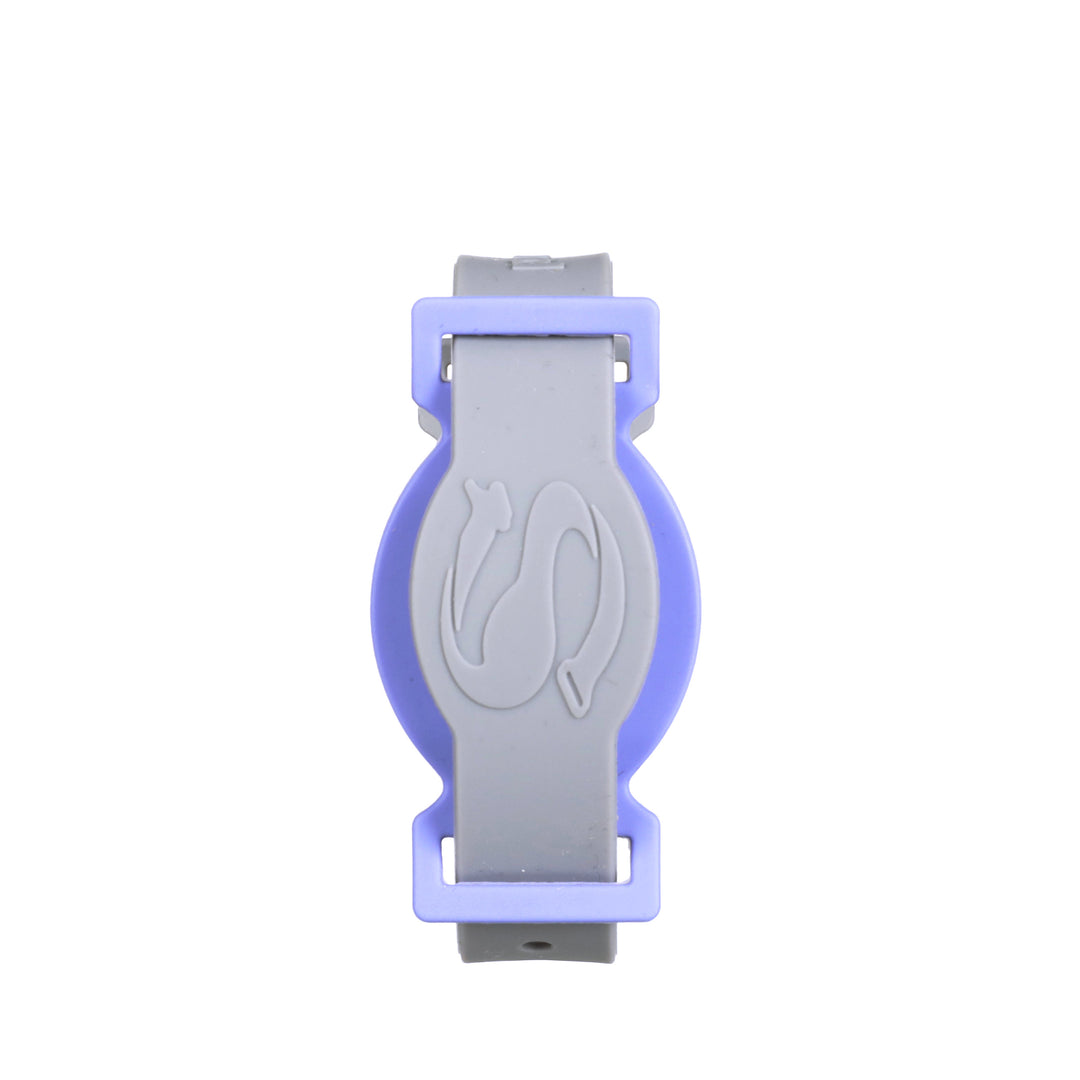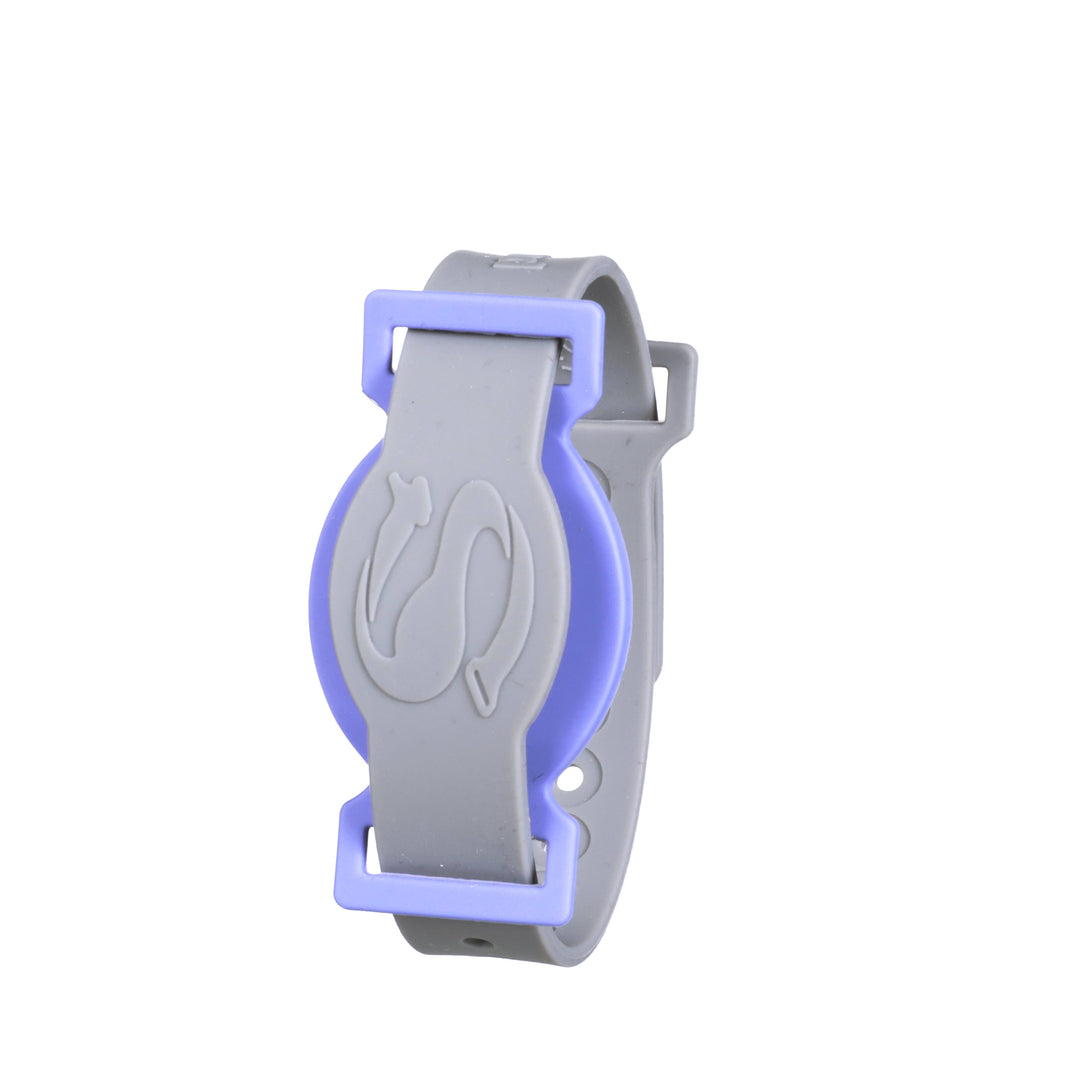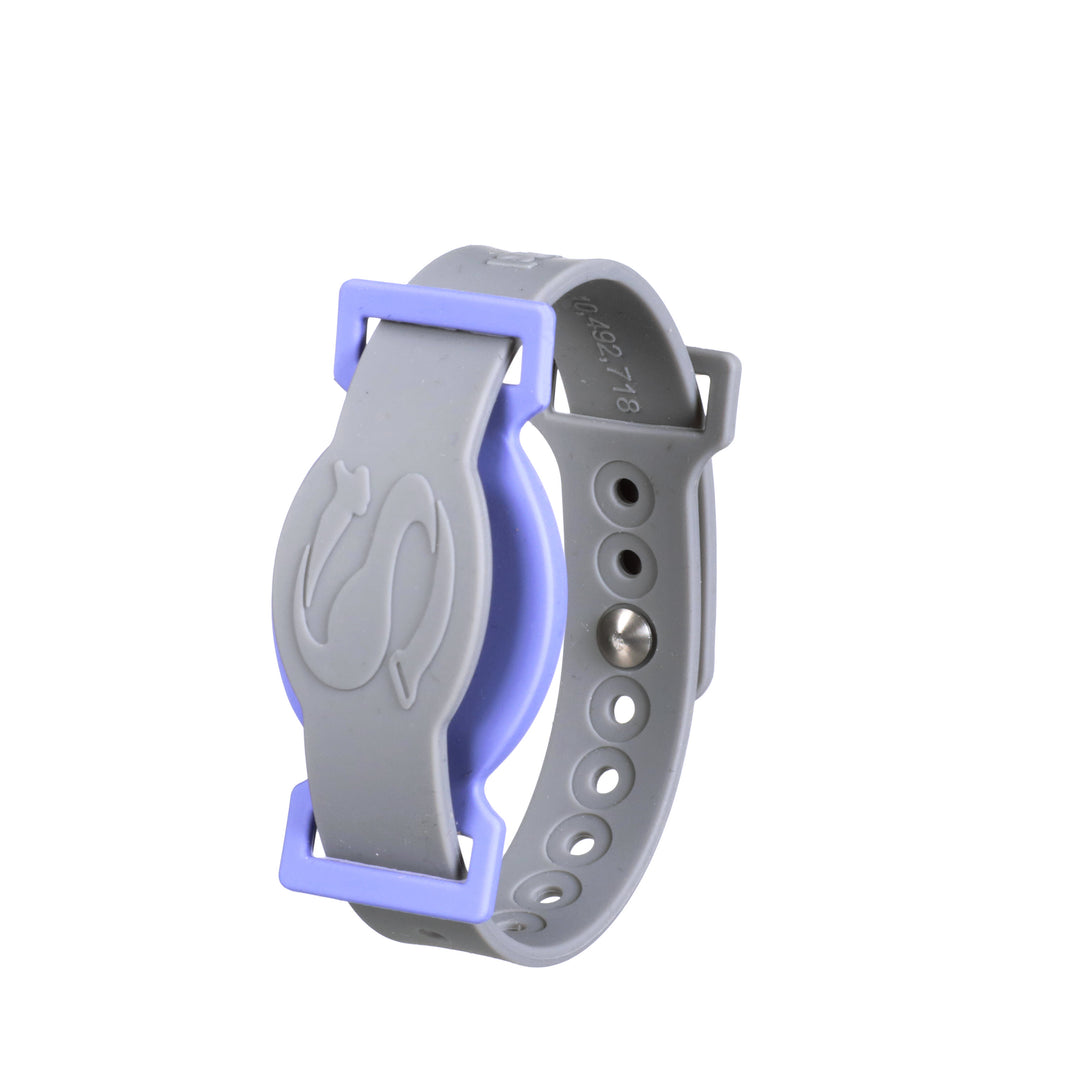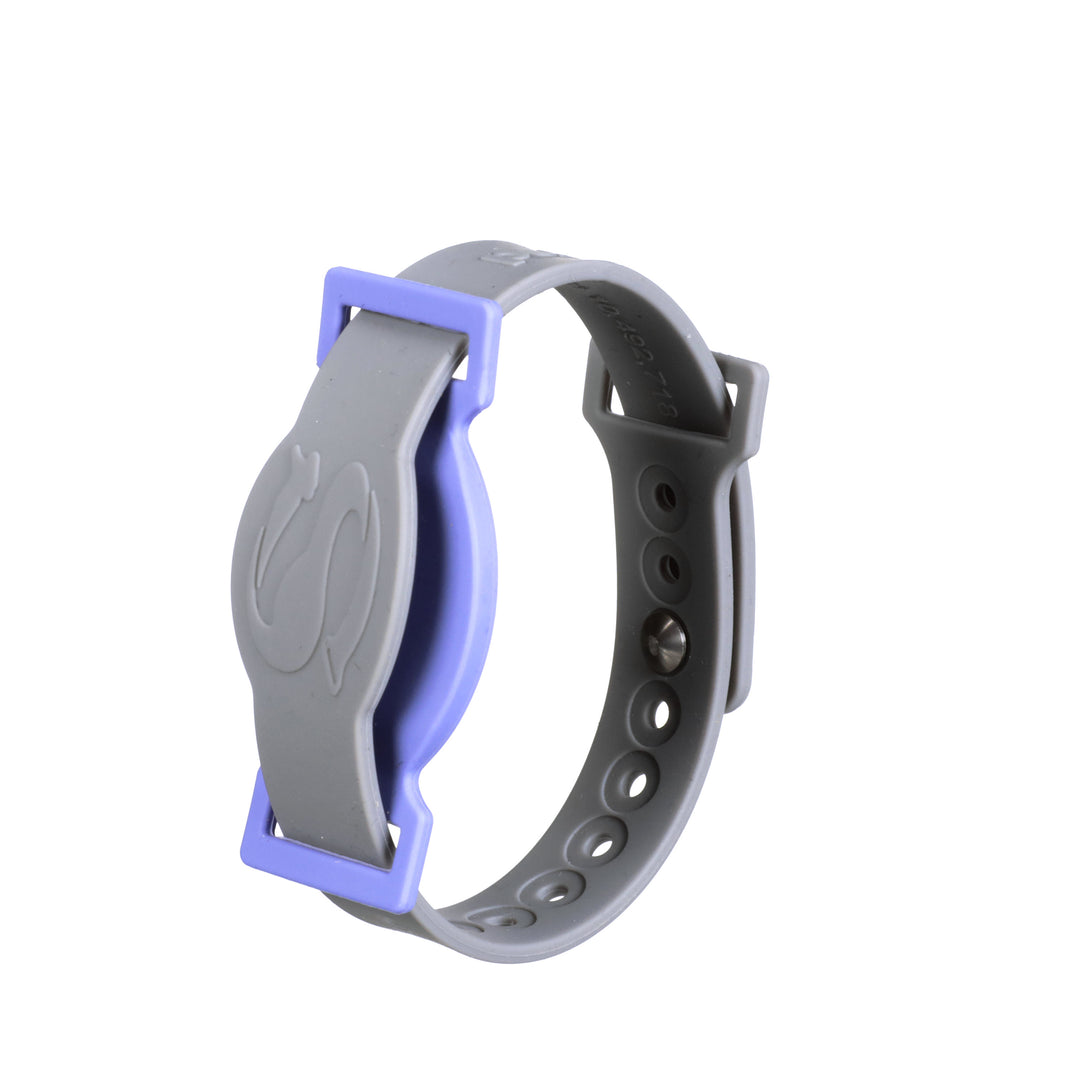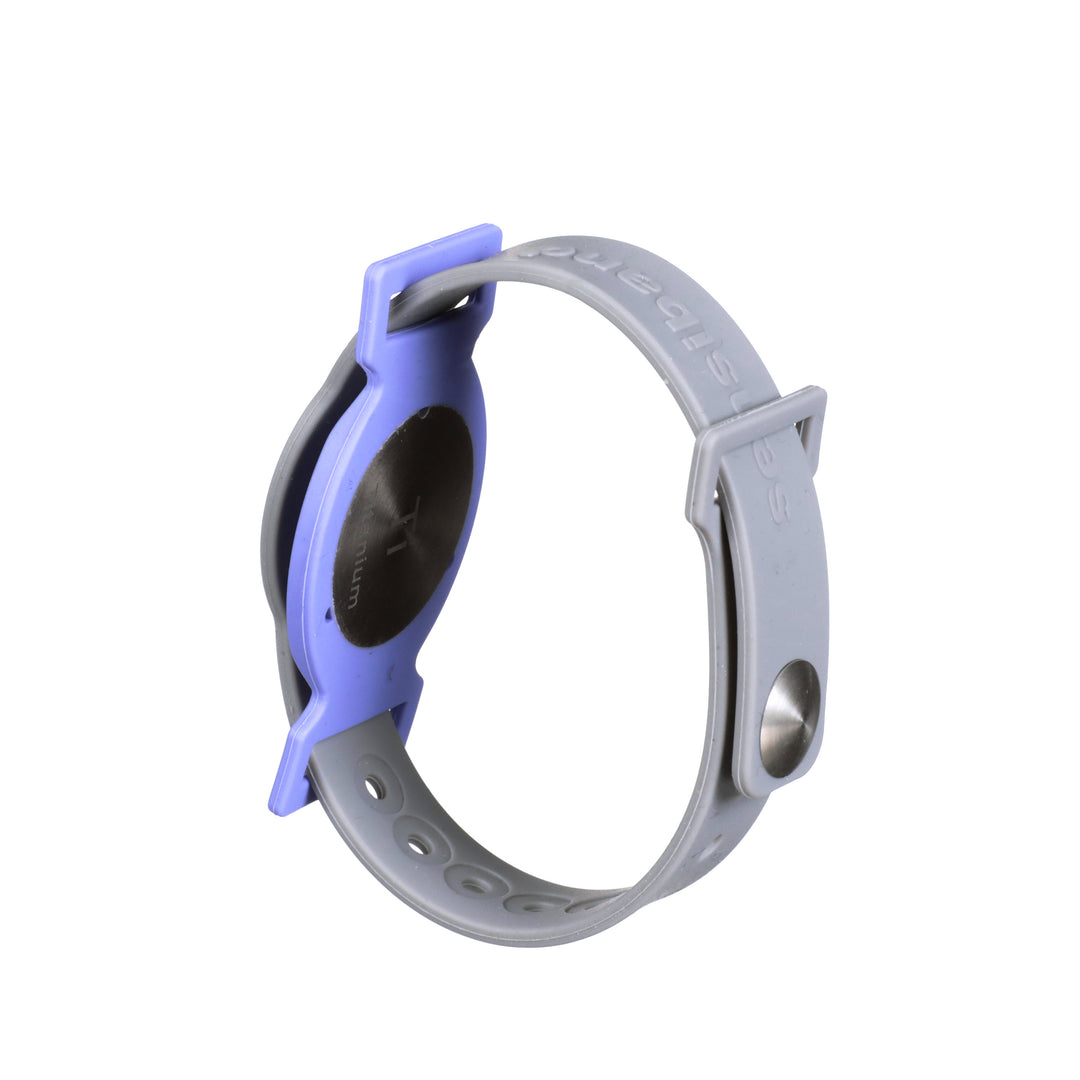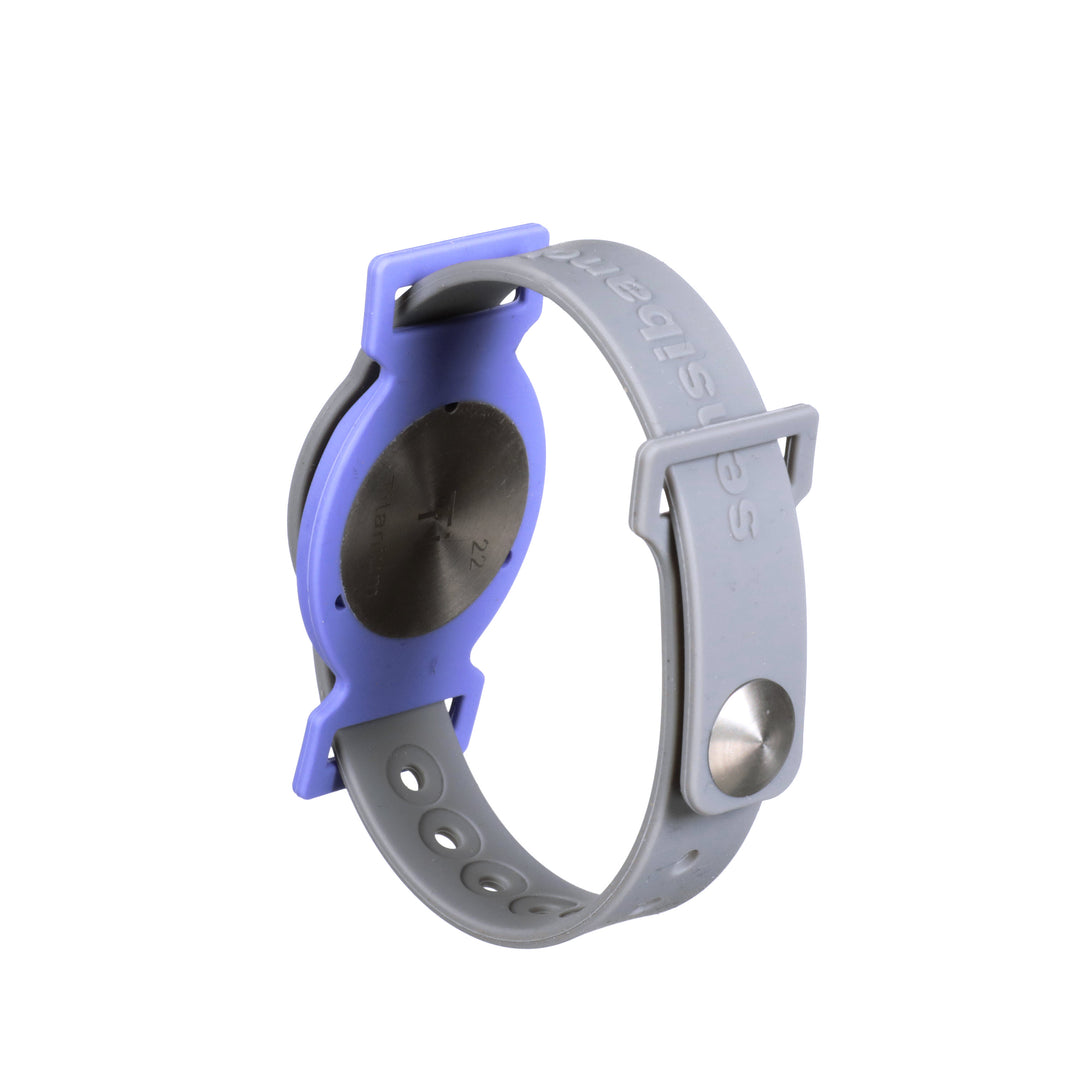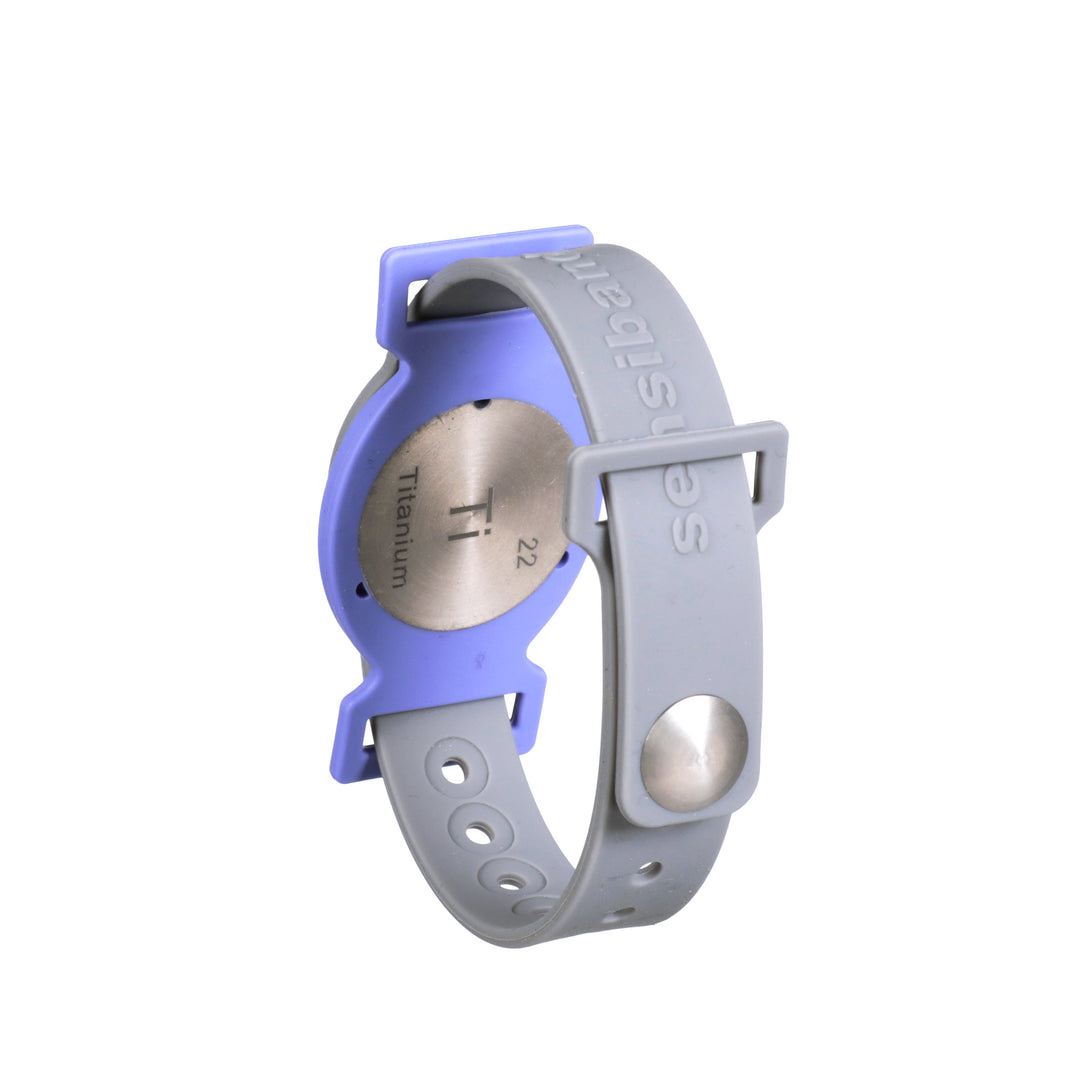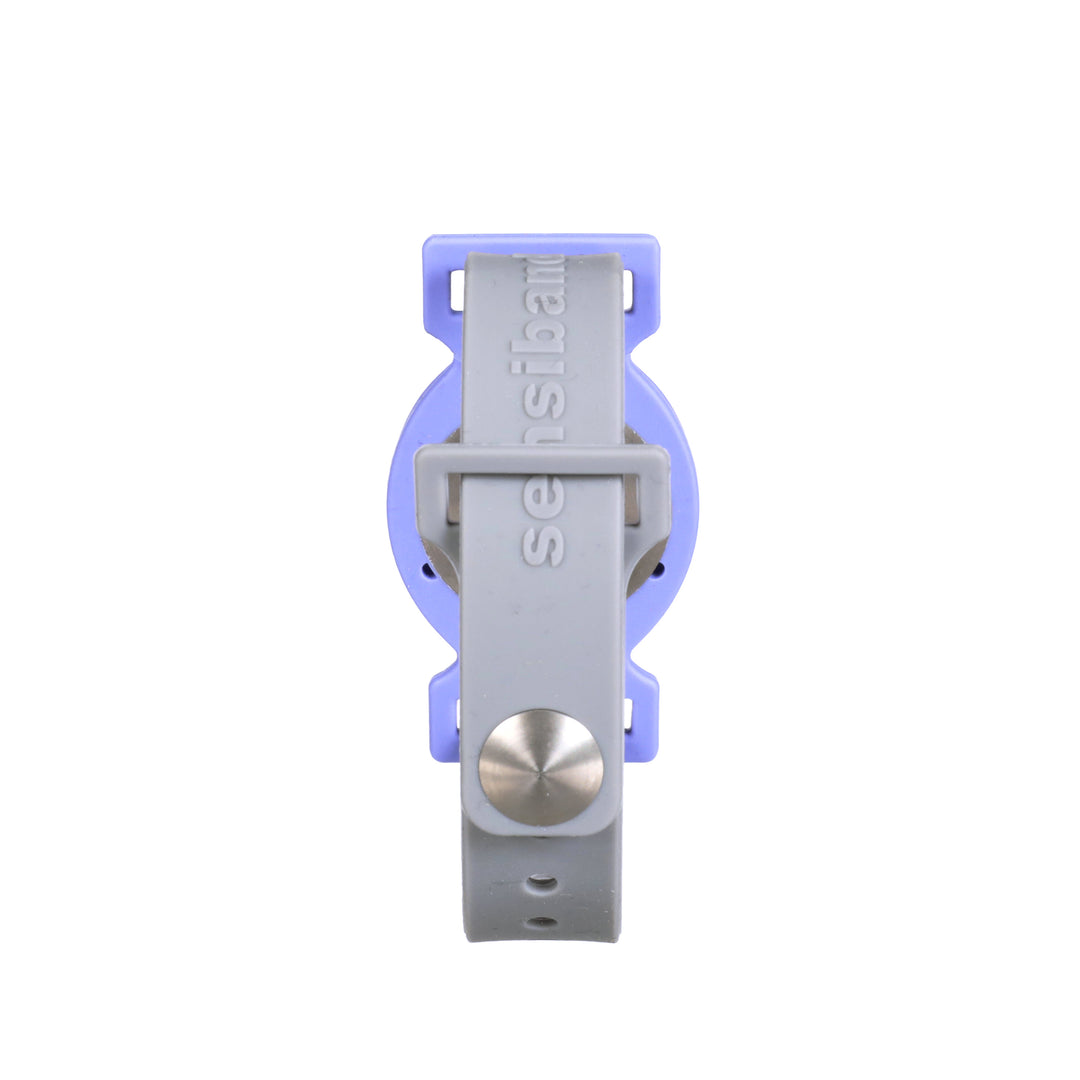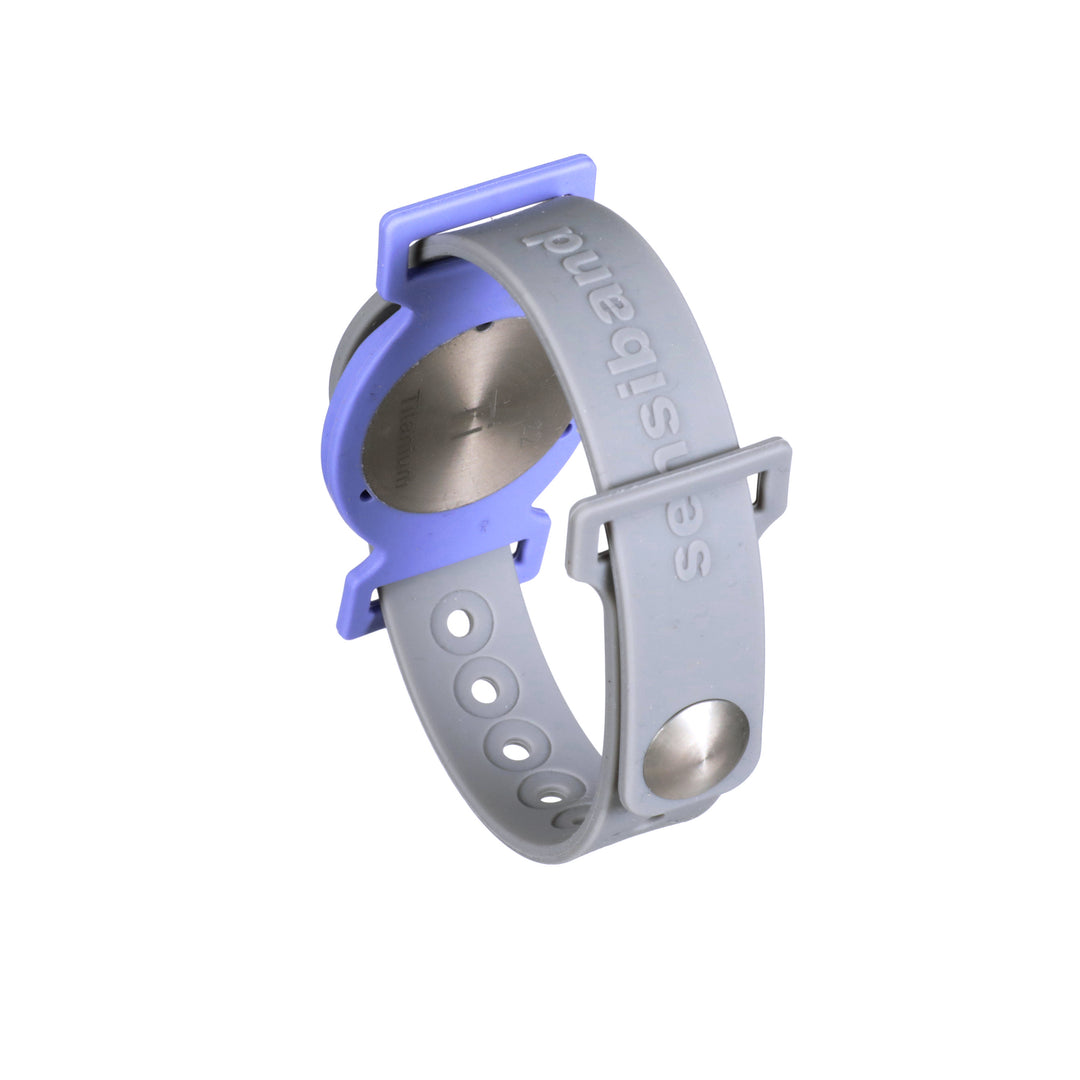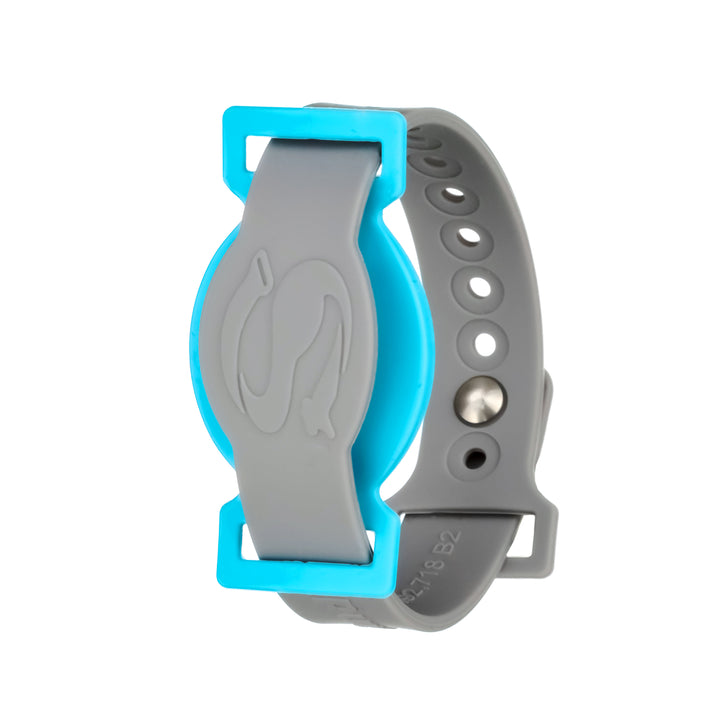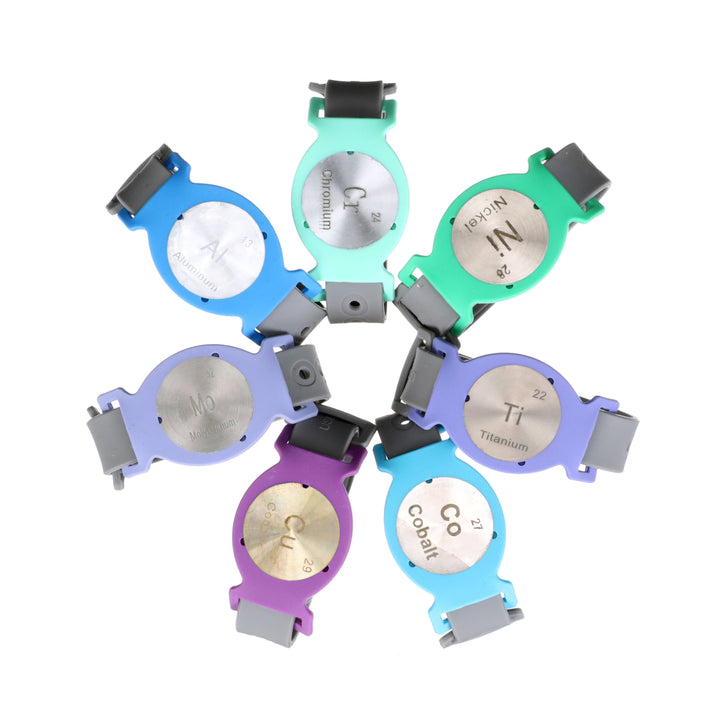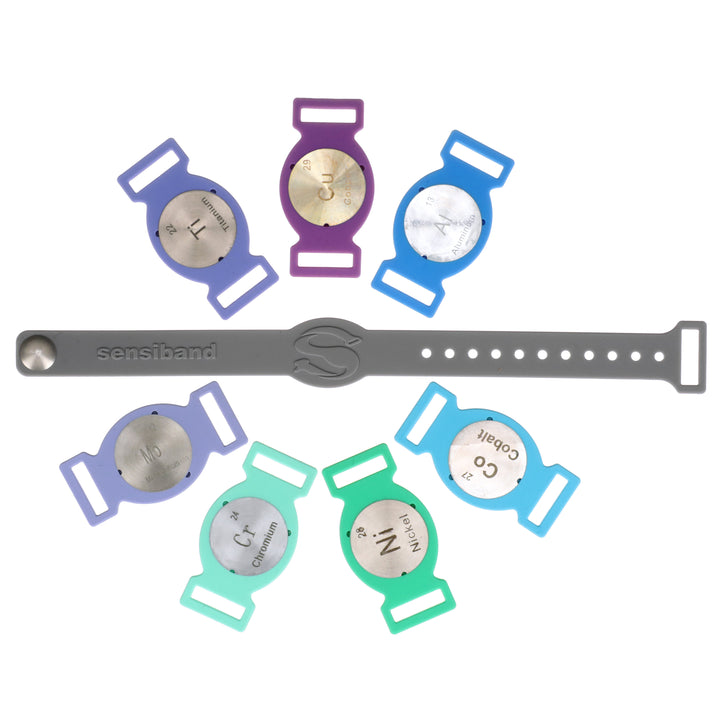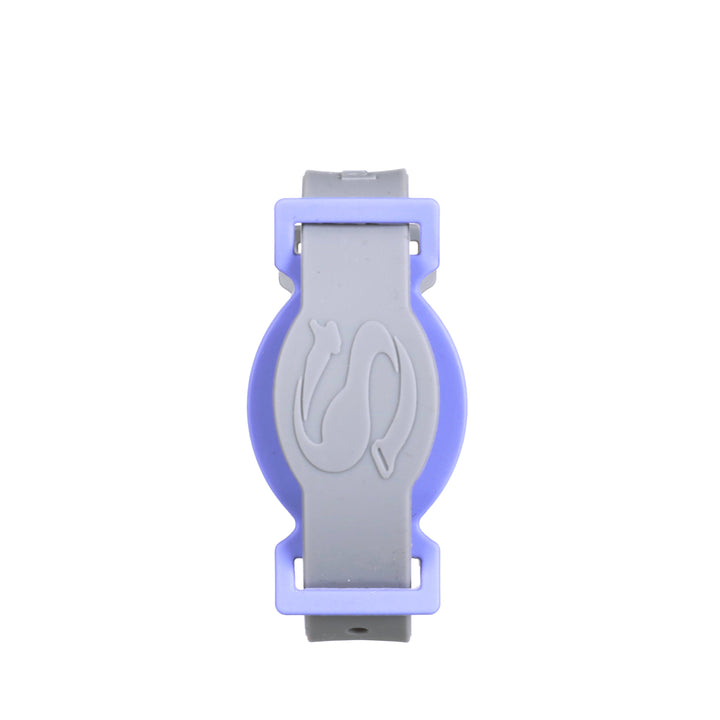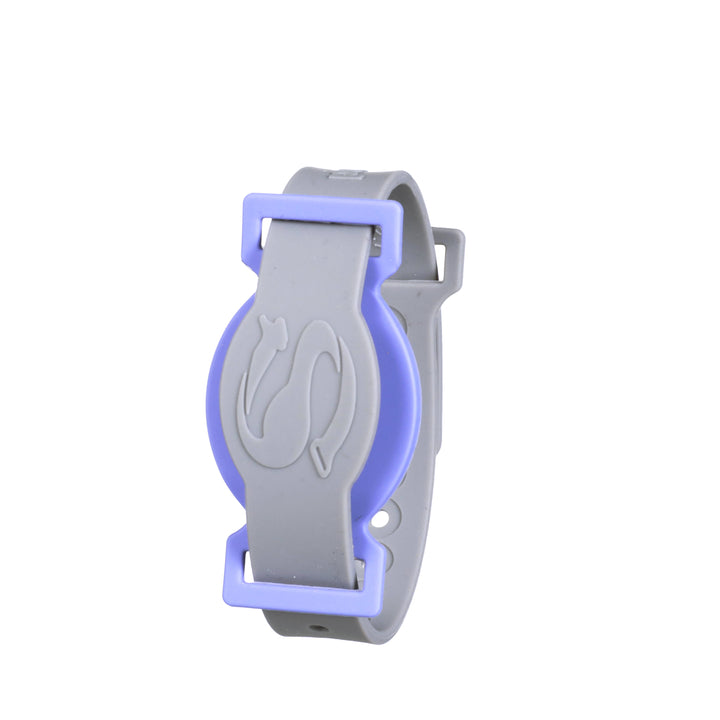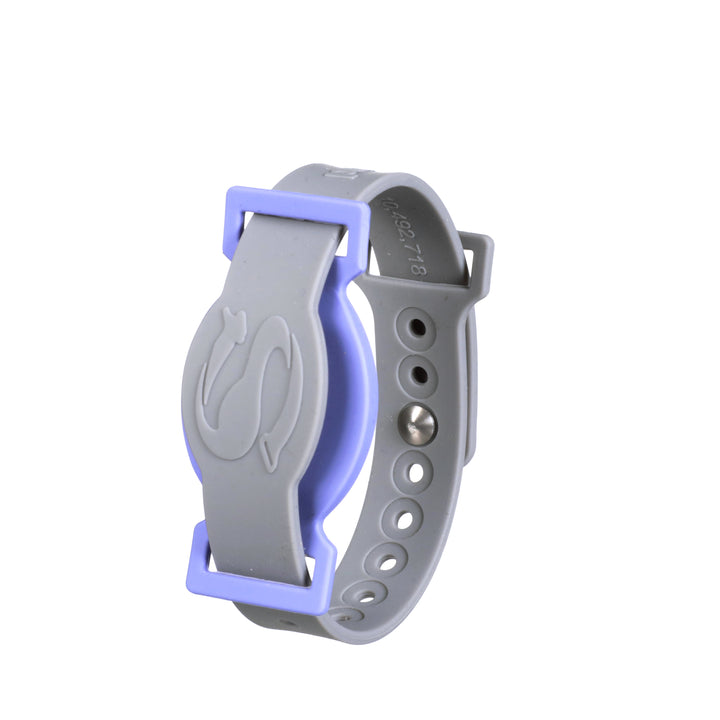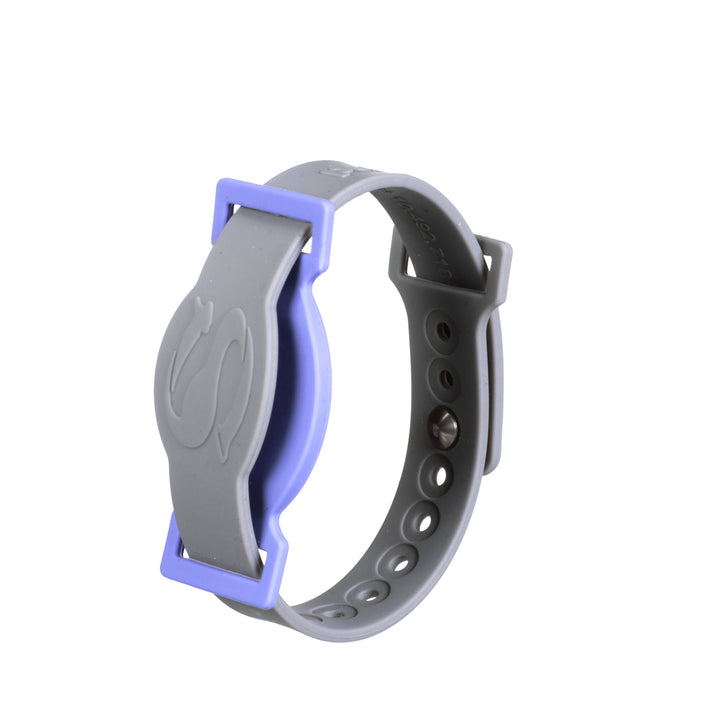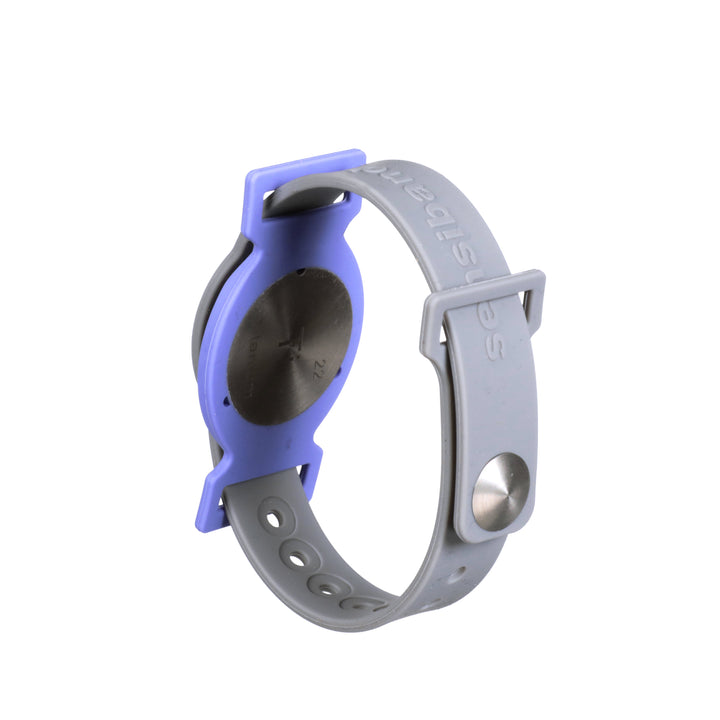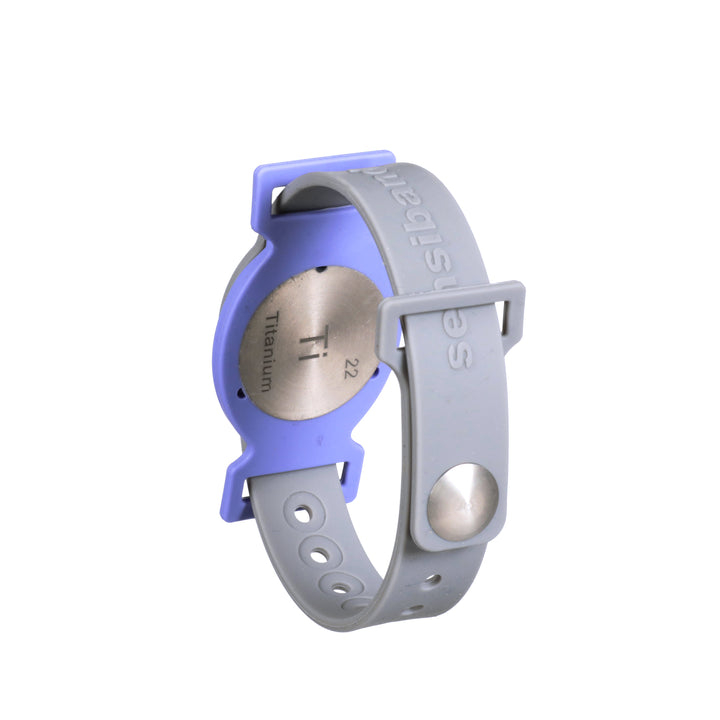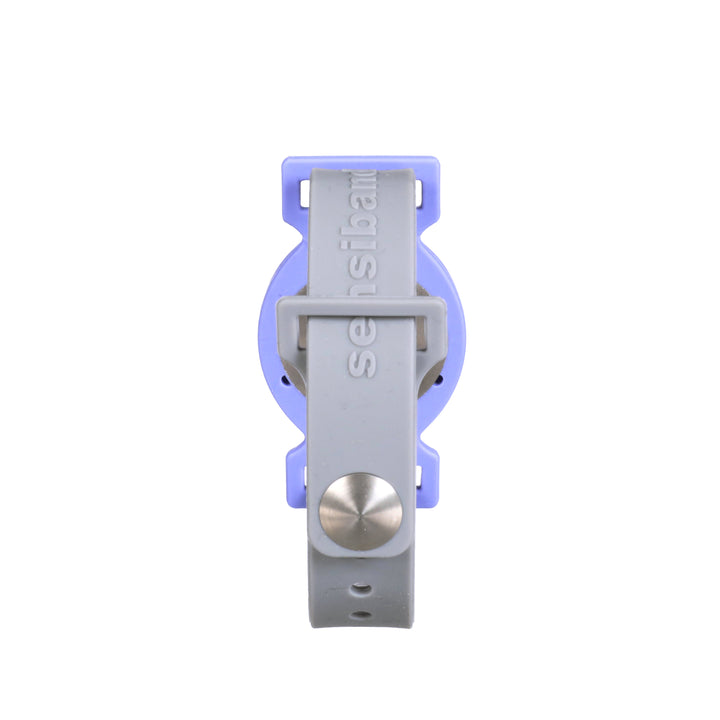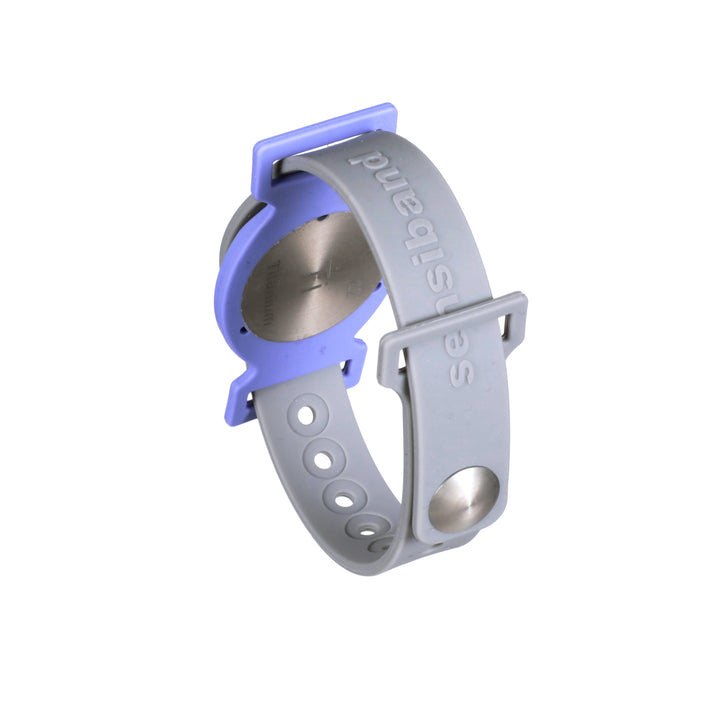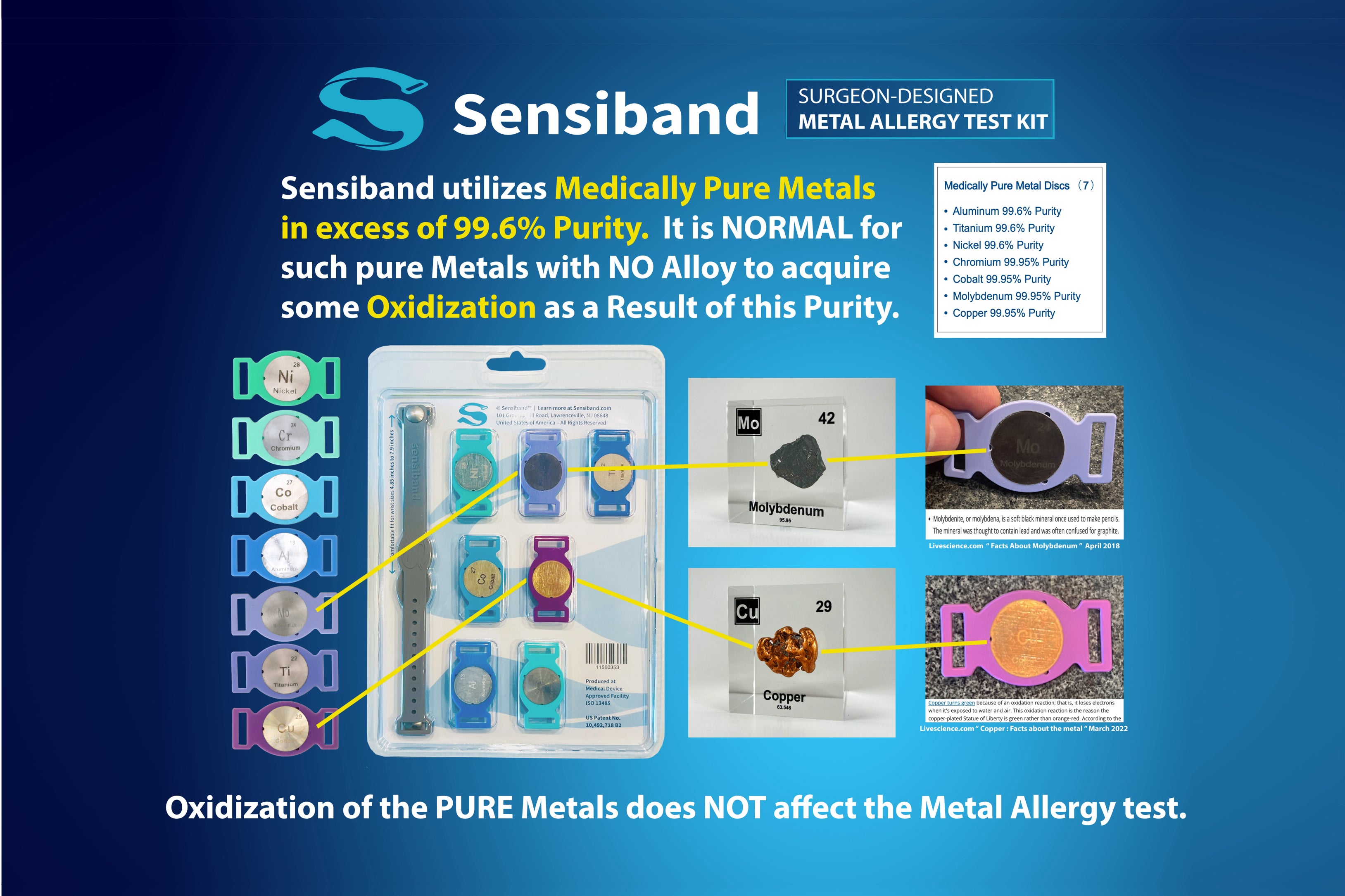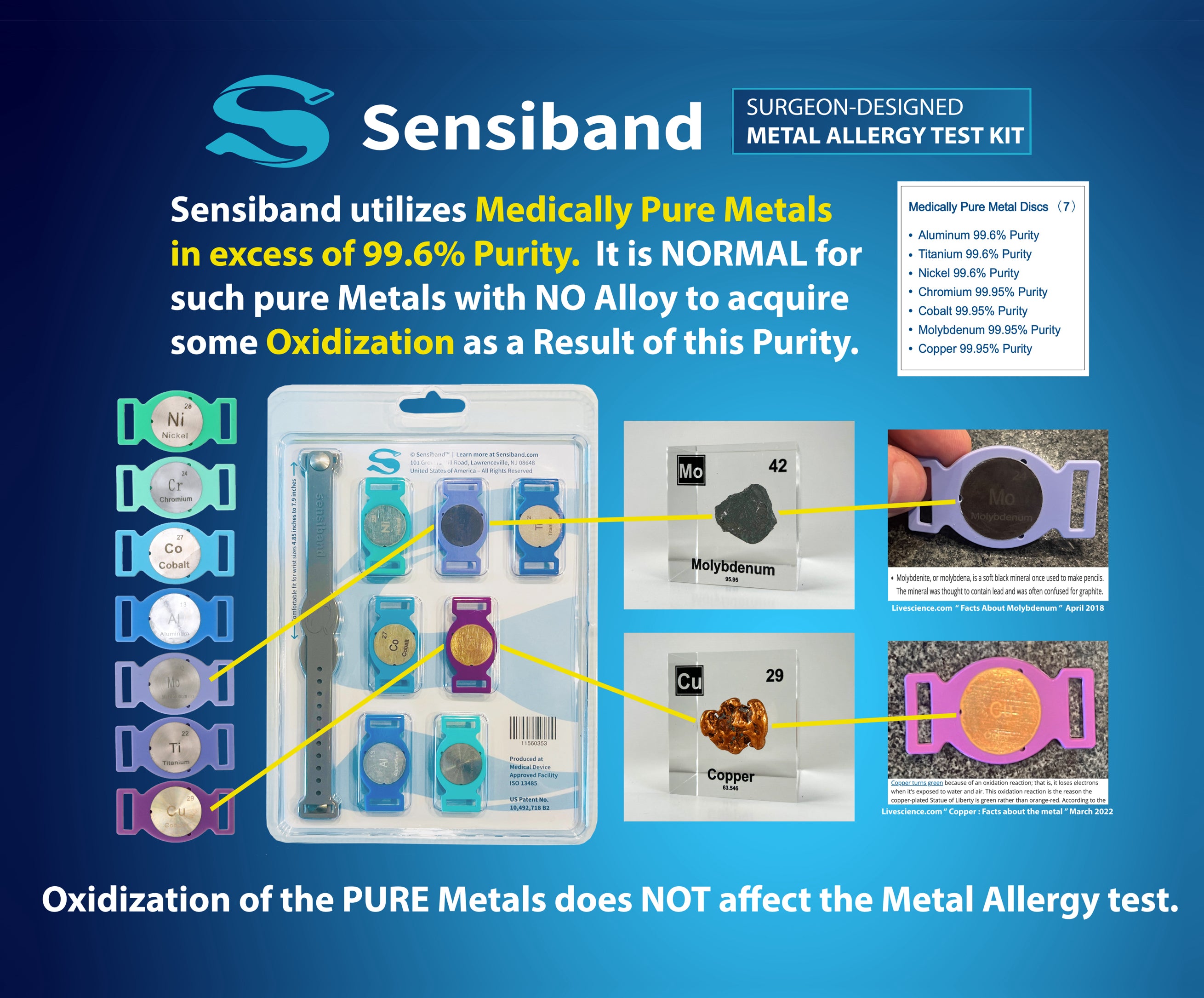How to Wear Sensiband
How to Wear the Hook and Loop Band
Directions for the Sensiband Metal Allergy Test Kit
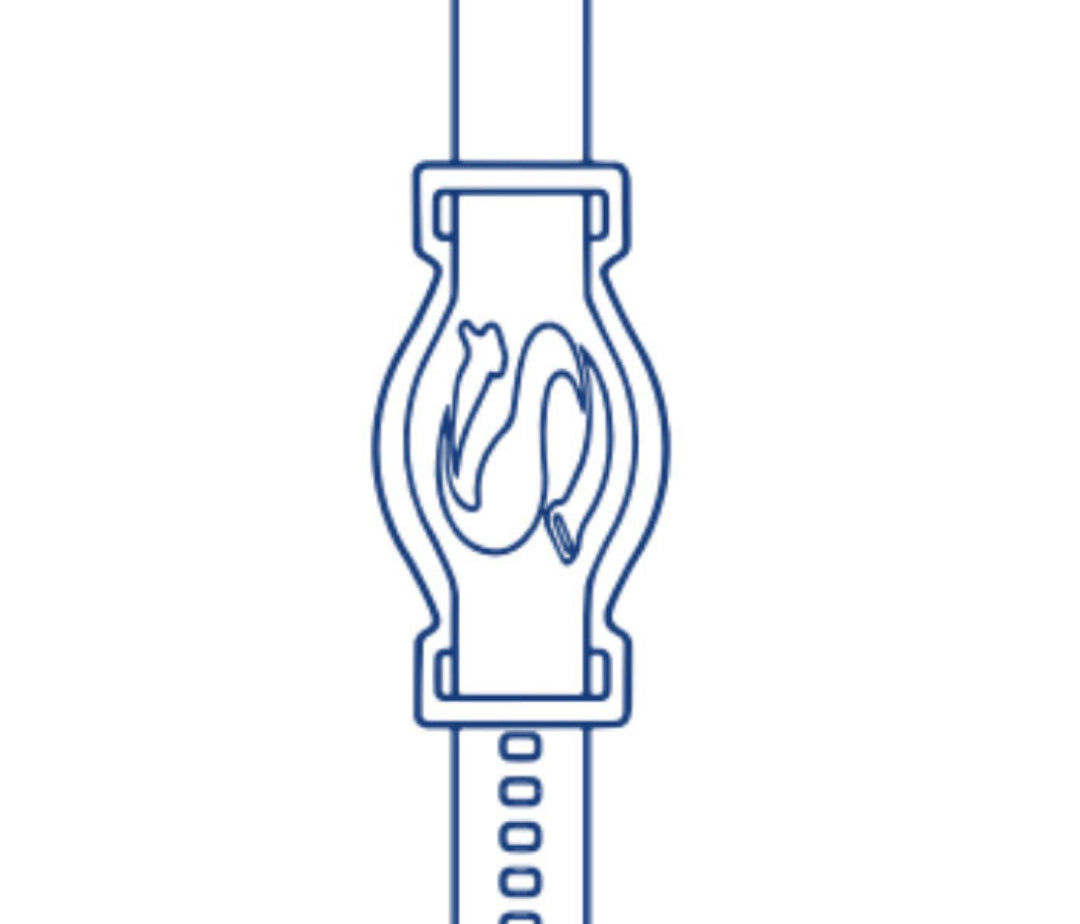
Step 1
Attach Metal Disc:
Select a metal disc and slide it over the band. Make sure to position the disc in the middle, and downwards so that it is in contact with the skin when worn.
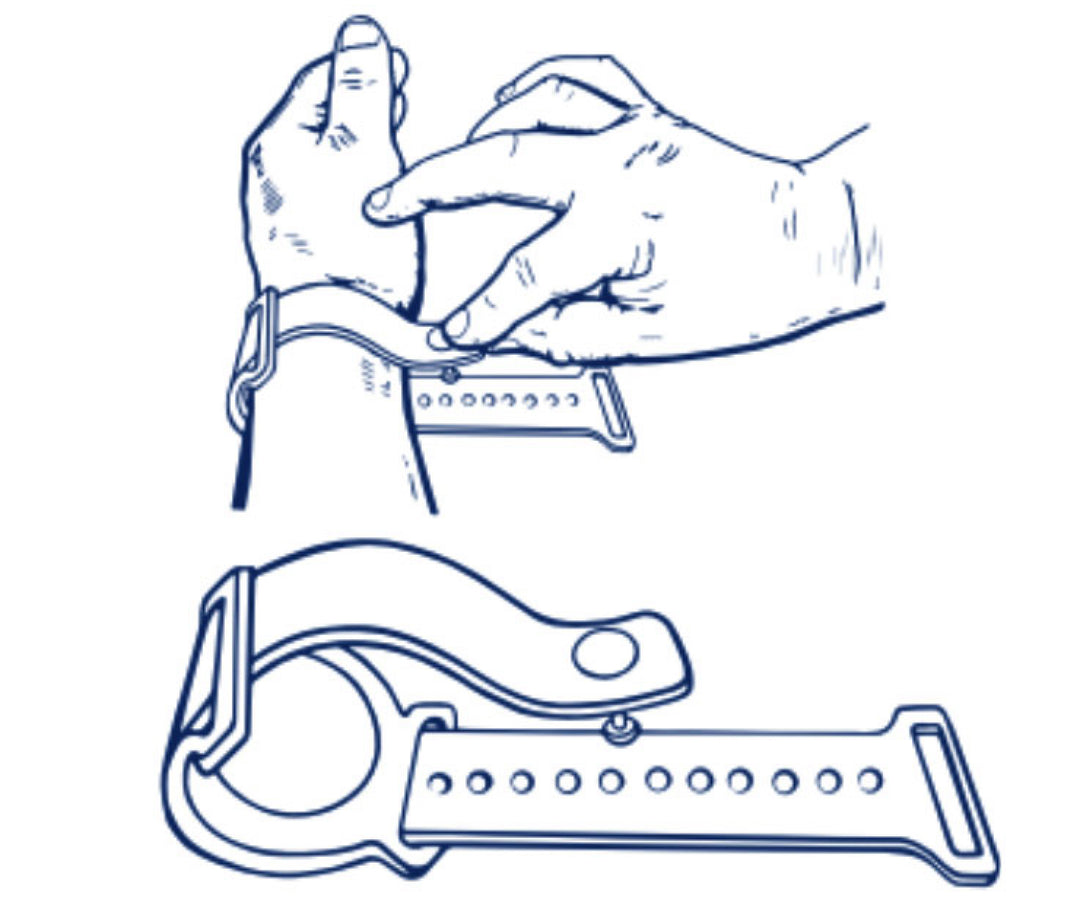
Step 2
Put on wristband and lock the clasp.
Wrap the wristband, with the selected metal disc, around your wrist. Be sure that the Sensiband logo faces outwards and the metal disc fits snug against your skin.
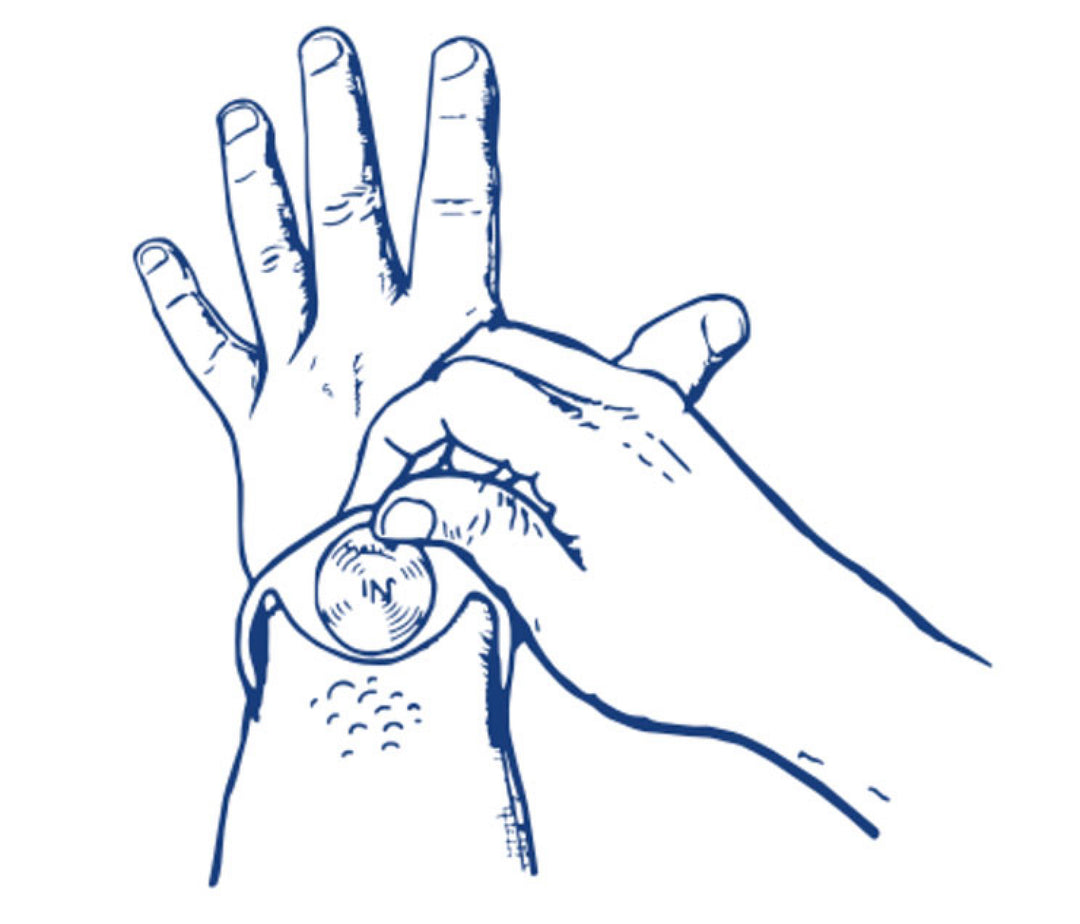
Step 3
Check for allergic skin reaction:
Wear Sensiband for at least 7 consecutive days, or until a reaction develops. Okay to wear during normal activity and exercise. If a metal allergy is present, a reaction known as Contact Dermatitis may appear. This reaction will present as a skin rash under the metal disc.
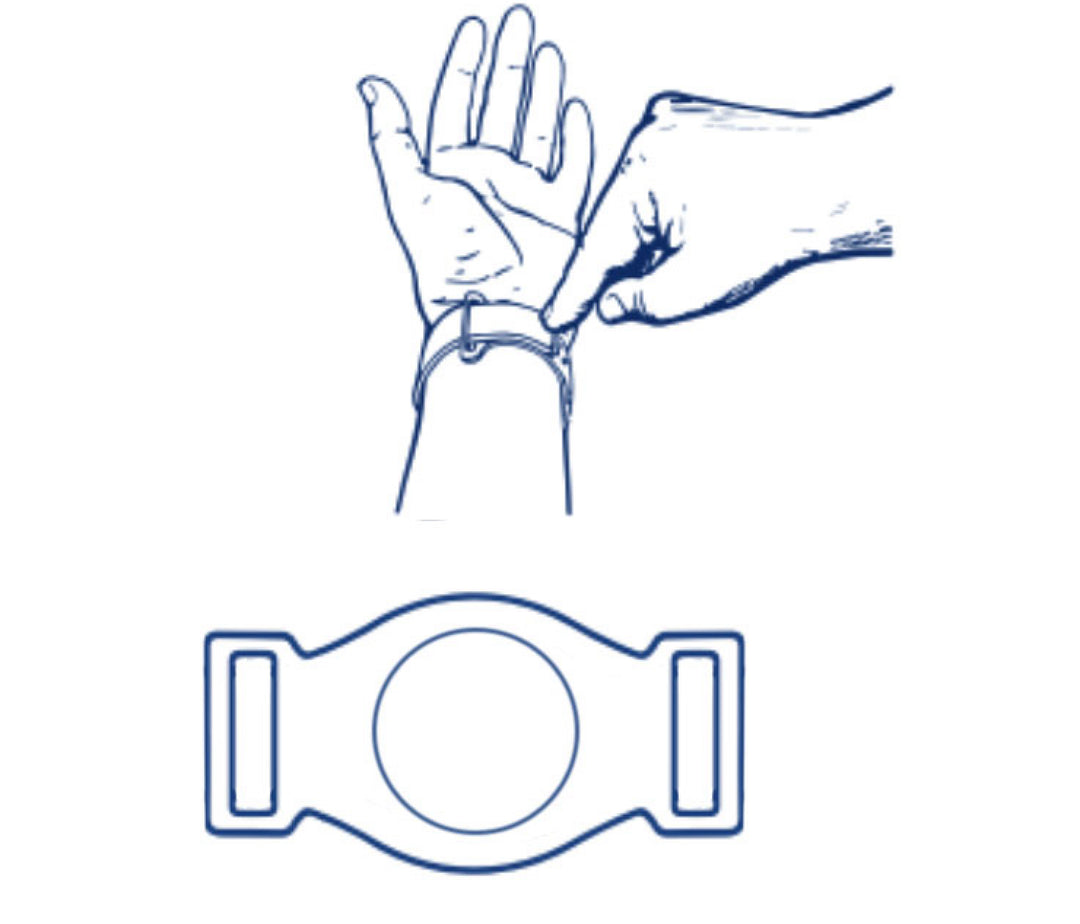
Step 4
Repeat with new disc:
After testing one metal disc, remove it and select a new one. Repeat Steps 1-3 for each metal to check for all potential allergies. This ensures a thorough and informed decision about your medical procedures.
Wear 5 to 7 days -or until reaction develops-repeat the process with a different metal disc. You may wear the two included bands on each separate wrist simultaneously.
Continue until all discs have been tested.
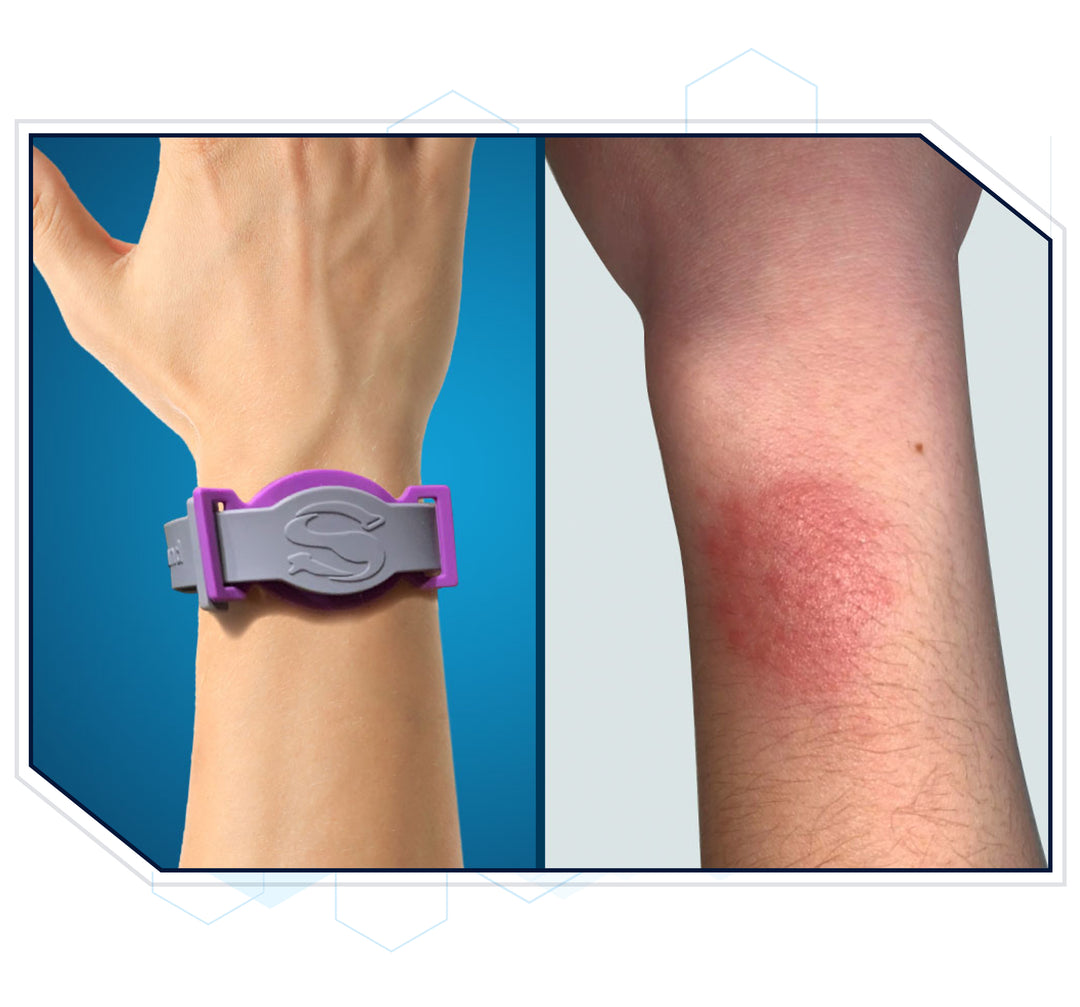
Important
If a metal allergy is present, a rash-like reaction known as Contact Dermatitis may appear. Make a note of which metal(s) cause a reaction, and tell your doctor not to use them for any of your medical procedures. They can easily choose a different type of implant to avoid placing metals in your body to which you are allergic.
Created and Designed By Surgeons
Sensiband was founded by Orthopaedic Surgeons Drs. Mark Drzala and Mitchell Reiter. Early in their careers, both surgeons were troubled by the fact that certain patients who underwent properly performed surgical procedures involving metal implants such as hip and knee replacements experienced poor outcomes. So they did something about it.
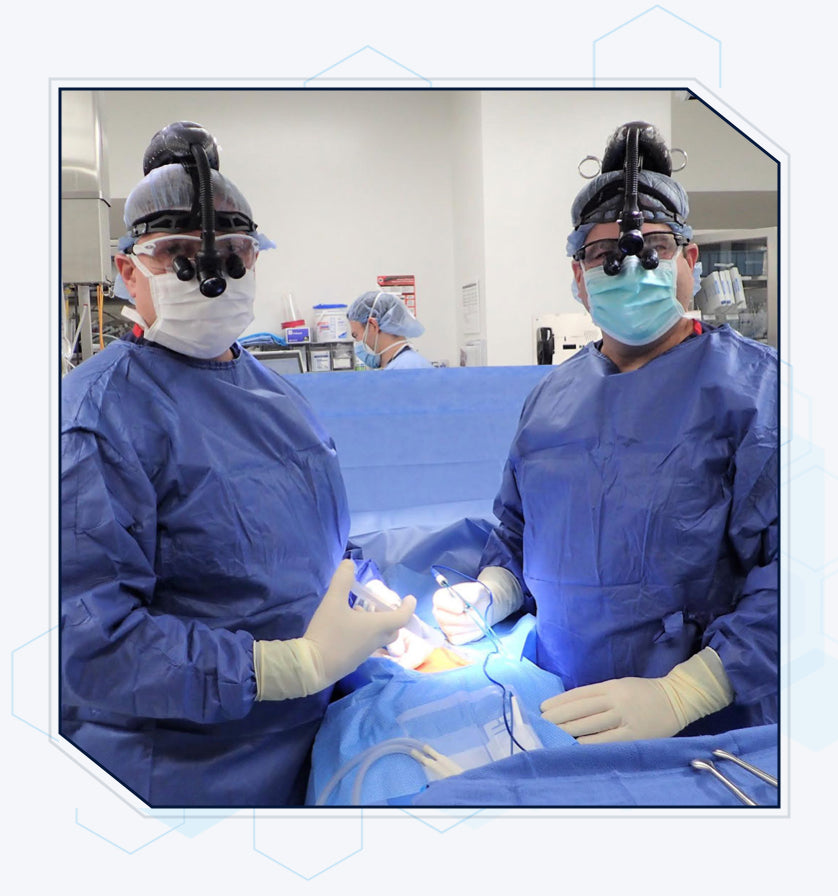
From our customers
FAQs
An allergy is a reaction of the immune system to a foreign or familiar substance to which bodies do not normally react. The word allergy can be used interchangeably with hypersensitivity. The Oxford University Press defines an allergy as “a damaging immune response by the body to a substance to which it has become hypersensitive.”
In 1963, two British immunologists, Robert Coombs and Philip Gel, classified hypersensitivity reactions into four different types.
- Type I – Immediate
- Type II – Cytotoxic
- Type III – Immune complex-mediated
- Type IV – Cell-mediated reactions or delayed hypersensitivity
Yes, but by themselves, metals do not cause allergies. They are essentially too small and are invisible to the immune system.
However, they can elicit immune responses and allergic reactions when they assume the role of a hapten. A hapten is a small molecule that elicits an immune response only when it binds to a carrier protein. This newly formed complex is what initiates the immune response.
Metal allergies are Type IV hypersensitivity reactions, which are cell mediated. These involve the cellular immune system. Specialized cells in the immune system orchestrate the cascade of reactions that ultimately cause the allergic response.
The cascade of reactions begins when an allergen activates specialized cells called T-cells. These activated T-cells then release substances known as cytokines which influence other cells. Two of these cell types are cytotoxic CD8-positive T-cells and macrophages.
These macrophages and CD8+ T-cells release inflammatory mediators, which enhance vascular permeability and cause damage to local tissue. Evidence for this includes erythema, cellular infiltration, induration, and formation of vesicles.
Unlike the first three types of allergic reactions which occur rapidly, the Type IV reaction is delayed, which means that there is a lag time from the initial exposure to the allergen to the time when the immune system manifests a response. Typically, it takes 1 to 3 days for a response to occur. Infectious contact dermatitis, transplant rejection, and graft-versus-host disease are all Type IV reactions.
Common antigens that cause Type IV reactions include poison ivy, topical medications, detergents, perfumes, rubber products, and other chemicals. Many individuals also develop contact dermatitis to metal jewelry or piercings.
The incidence of metal allergies is increasing in the general population. This is due to the increased exposure to metals in the environment and in daily life. Metals are present in many items that directly contact the skin and are also found in implanted medical and dental devices, tattoo ink, foods, and supplements.
There are two commonly accepted tests that can help to determine if an individual is allergic to one or more metals. One is a Patch Test, which is most commonly performed. The less common test is a Lymphocyte Transformation Test, which is a blood test. Both tests must be ordered by health care providers.
Skin prick tests and skin injection tests are useful to identify allergies to substances like pollen, mold, pet dander, dust mites and foods, but they are not used to identify allergies to metals.
Most individuals with medical and dental implants do well and do not experience any allergic reactions. However there are some individuals who experience local and/or systemic symptoms.
The incidence of metal allergies is rising in the general population, most likely a consequence of increased exposure to metal from piercings, jewelry, and internal medical devices or dental restorations. Medical implants use multiple metals, including nickel, cobalt, chromium, molybdenum, zirconium, and titanium. As many as 13% of people are sensitive to nickel, cobalt, or chromium. 17% of women and 3% of men are allergic to nickel, and 1-2% of people are allergic to cobalt, chromium, or both.
It is not surprising that immune response to medical implants is commonly reported in the literature, including hypersensitivity to pacemakers or other cardiovascular devices, dental implants, and orthopedic hardware, including joint replacement prostheses, fracture fixation devices, and pain-relief stimulators.
If an individual experiences any of the symptoms for metal allergies, it would be wise to undergo testing to help make this diagnosis. Greater awareness of hypersensitivity to metals could prevent patient exposure to implants which could lead to significant morbidity.
In 1994, the European Union recognized the significant troubles associated with the increasing incidence of hypersensitivity to nickel, and on June 30, 1994, the EU issued a ‘Nickel Directive,’ which regulates the use of nickel in jewelry and other products that come in contact with the skin. The aim of the legislation is to prevent the general population from becoming sensitized to nickel and to reduce nickel allergic contact dermatitis reactions in the majority of nickel-sensitized individuals. China adopted a similar standard in 2012.
Although no such directive exists in the United States, efforts are under way to mandate safe use guidelines for nickel. In 2014, it was estimated that roughly 2.5 million US adults and 250,000 children were suffering from nickel allergy, at an estimated cost of $5.7 billion per year for treatment of symptoms.
Treatments are tailored for each patient and is dependent upon their symptoms and the specific circumstances surrounding their allergic responses. Once a metal allergy has been confirmed, the best treatment is avoidance of metal-releasing items.
In patients who are experiencing contact dermatitis due to a metal that is in contact with their skin as seen with jewelry and piercings, they can simply remove the metal object and monitor the reaction, which in most cases will improve over time.
Nickel and Cobalt for 5 days / Chrome and Molybdenum for 5 days /Titanium and Aluminum for 5 days (Copper is specific to IUD's).
By following the ABOVE Recommendation, you may TEST Yourself in only 15 days.
*Add 5 to 7 days to receive the TEST KIT after Ordering.



